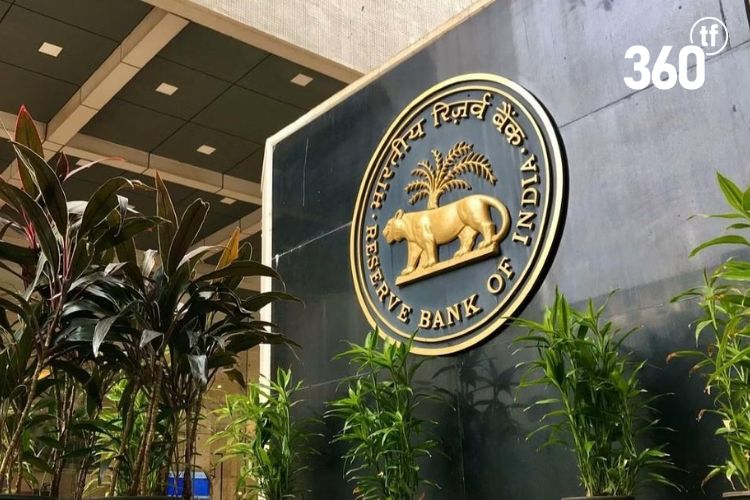Keeping the policy rate unchanged is important for industry, as it will further boost growth.
The Reserve Bank of India’s decision to keep the repo rate unchanged at 6.5 per cent on August 10, 2023, marking the third consecutive pause on policy rates by the Central Bank, has been welcomed as a pragmatic approach by India Inc., businesses, and policy experts who view it as a further step towards building up on the growth momentum, providing impetus to industry, and staying committed to bringing inflation within the target band. While being largely viewed as an expected line of action, the retention of the policy repo rate to 6.5 per cent importantly signals a focus on ensuring sustainable growth of 6.5 per cent or more for the economy while navigating challenges of inflation related more to weather conditions, headwinds from weak global demand, volatility in global financial markets, geopolitical tensions, and geo-economic fragmentation, which pose risks to the growth outlook.
For exporters, the stable monetary policy followed by the RBI comes at a crucial time when trade and businesses are exploring new markets and need stability in finance costs amidst the daunting challenges faced by the global economy and its impact on India, agrees Arun Kumar Garodia, Chairman of the Engineering Export Promotion Council. The slowdown in the world economy and tepid demand in major advanced markets have significantly impacted the engineering exports sector, which has reflected in a sharp decline in shipments. “Engineering exports from India conceded a year-on-year decline for the seventh month in a row in June this year, starting in December 2022,” says Garodia.
With both the US Fed and European Central Bank increasing the interest rate by a quarter percentage point, a section of trade and industry was of the view that the RBI would continue to follow the same path of maintaining the status quo on policy rates. “While most central banks have given more weight to inflation as compared to growth, the RBI has struck a nice balance between the two, giving primacy to growth, thereby maintaining the GDP growth forecast for FY24 at 6.5 per cent,” says A. Sathivel, president of the Federation of Indian Export Organisations (FIEO). The status quo in rates will also help the exporting community, whose cost of credit has gone up substantially due to upward revisions in rates during the last one and a half years, leading to the demand to increase the interest subvention from 2 percent and 3 percent to 3 per cent and 5 per cent, respectively.
The decision to keep the policy rate unchanged is also important for industry, as it will further boost growth through increased investments, which in turn will further enhance manufacturing and production, thus easing supply and reducing inflation in the coming months, according to Sakthivel. The RBI move also comes as a timely incentive when the recovery in kharif sowing and rural incomes, along with the positive momentum in services and consumer confidence, are expected to bolster household consumption. The FIEO Chief, however, feels exporters could add some more momentum to the external sector by extending the Emergency Credit Line Guarantee Scheme by one more year until March 31, 2024. “The resilient external sector growth backed by the financial sector push will help give more thrust to the economy,” says Sakthivel.
The automotive retail sector, currently on a commendable growth trajectory, is upbeat about the RBI’s focus on anchoring inflation at 4 per cent, much needed as a bolstering force for the industry ahead of the festive season, often seen as a turning point in India’s consumer market. “The consistent repo rate is poised to benefit consumers significantly,” says Manish Raj Singhania, President of the Federation of Automotive Dealers Association. “Such stability in rates reinforces confidence, particularly among entry-level customers in both the passenger vehicle and two-wheeler segments. It’s worth noting that the recovery in the entry-level two-wheeler segment, in particular, still lingers below pre-COVID benchmarks,” points out Singhania.
Deepak Sood, ASSOCHAM Secretary General, who is optimistic that the RBI would ensure adequate liquidity in the banking system for additional momentum to the India growth story, points out several positive macro takeaways from the RBI-Monetary Policy Committee (MPC) intervention, like an uptick in capacity utilisation in the manufacturing sector and revival of private sector investment in key sectors of the economy. “This is despite challenges emanating from the global economy. Excluding food and fuel, core inflation is declining while the weather conditions should play out in a few months. We share such an assessment by the RBI,’’ says Sood. Besides, he points out, there is an assurance of enough liquidity in the system that should give comfort.
Sood looks at other spillovers of the RBI policy review, which encompasses a wider spectrum, including a boost to infrastructure funding, transparency in the EMI resetting for the borrowers, and an innovative technology interface for frictionless credit delivery through end-to-end digital platforms. “Enabling UPI with artificial intelligence under the supervision of the RBI is a leap frog not only for the financial sector but also for the wider usage of AI for the common good of the people,” says Sood.
Industry body FICCI, however, voices a clouded outlook due to possible El Niño conditions amidst the fine balancing act and diligent approach to steer the economy through a challenging phase. “A tough global outlook calls for careful monitoring even as the policy stance remains withdrawal of accommodation while allowing previous interventions to flow through the system,” says Subhrakant Panda, President, FICCI. “The FICCI manufacturing survey indicated a revival of private capital on the back of the government’s significant outlay and business optimism, which has been reiterated by the Governor,” adds Panda, lauding the RBI’s innovative measures such as conversational payments on UPI, which will expand the scope of digital payments.
Chief Policy Advisor, Ernst & Young India, DK Srivastava, views the RBI decision to have kept the repo rate unchanged at 6.5 per cent with continued monitoring of the liquidity situation as being led by reliance on domestic demand to take care of growth in spite of the continued supply-side challenges.
Srivastava finds that the fiscal landscape provides considerable reassurance for maintaining investment momentum. “The central government has demonstrated proactive measures by front-loading its capital expenditure, resulting in a remarkable growth of 59.1 per cent during the first quarter of 2023–24. This prudent fiscal approach contributes significantly to the overall environment for sustainable investment,” says the EY Advisor.
Radhika Rao, Executive Director and Senior Economist, DBS Bank, views the RBI’s hold on the repo rate as a pause with hawkish underpinnings. The RBI MPC move reflects vigilance on inflation while highlighting the supply-driven nature of the recent run-up in food segments. Rao underlines the RBI’s emphasis that further action will be warranted on signs of unanchoring inflationary expectations as well as if inflation stays above the mid-point target of 4 per cent on
a durable basis.
CRISIL Market Intelligence and Analytics views the RBI move as a sign that the MPC is comforted by continued resilience in economic growth even as exports remain a drag on growth and the MPC sees global demand and geopolitical tensions as risks to the growth outlook. On the upside, Crisil research observes that among demand segments, investment is gaining steam, led by government capital expenditure. Private capex, too, is seeing signs of revival, with capacity utilisation in the manufacturing sector at 76.3 per cent in Q1—aabove the long-term average of 73.7 per cent. The urban economy continues to lead consumption demand, while rural demand is seeing a nascent recovery.
Courtesy: sundayguardianlive.com




